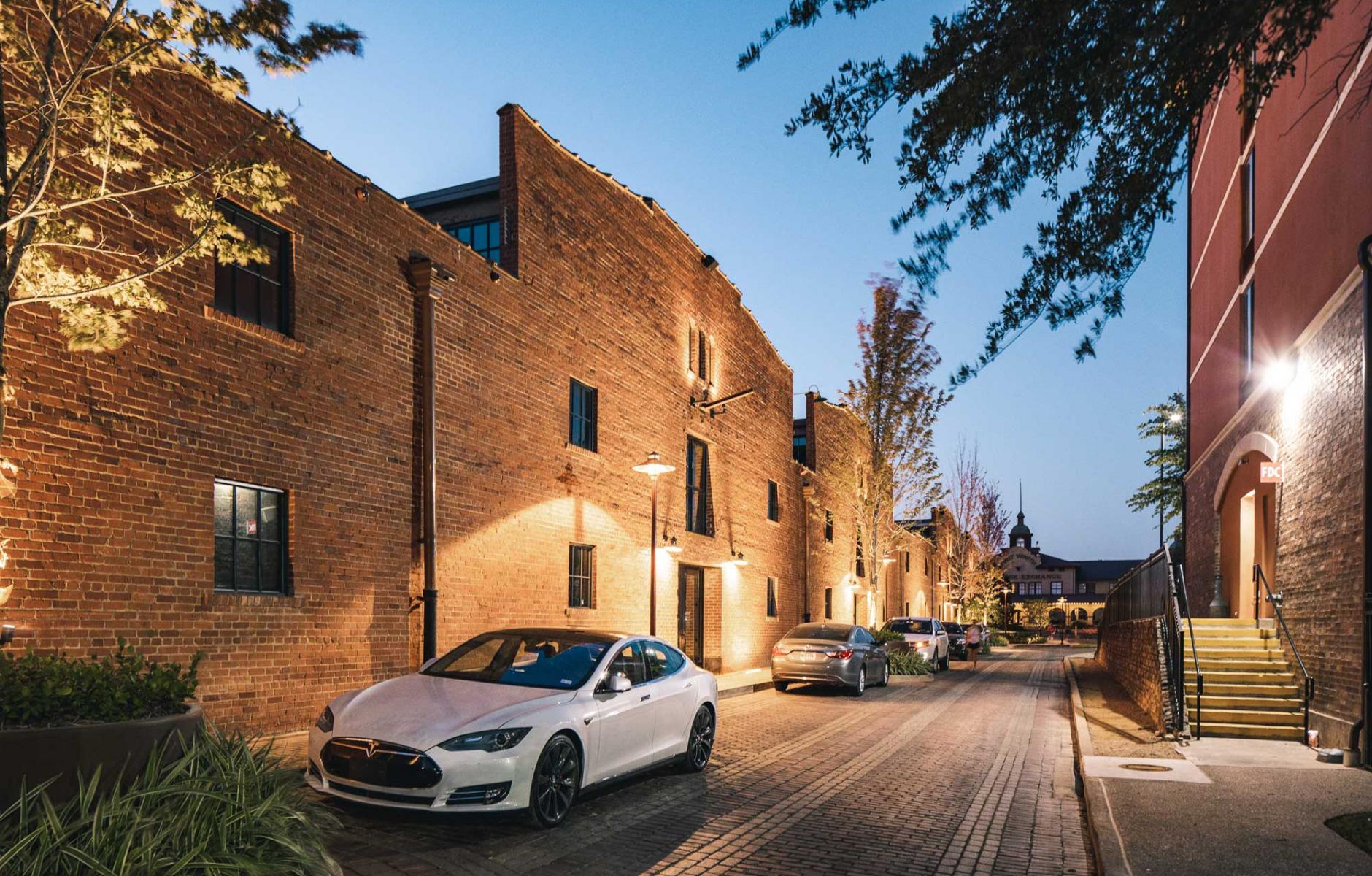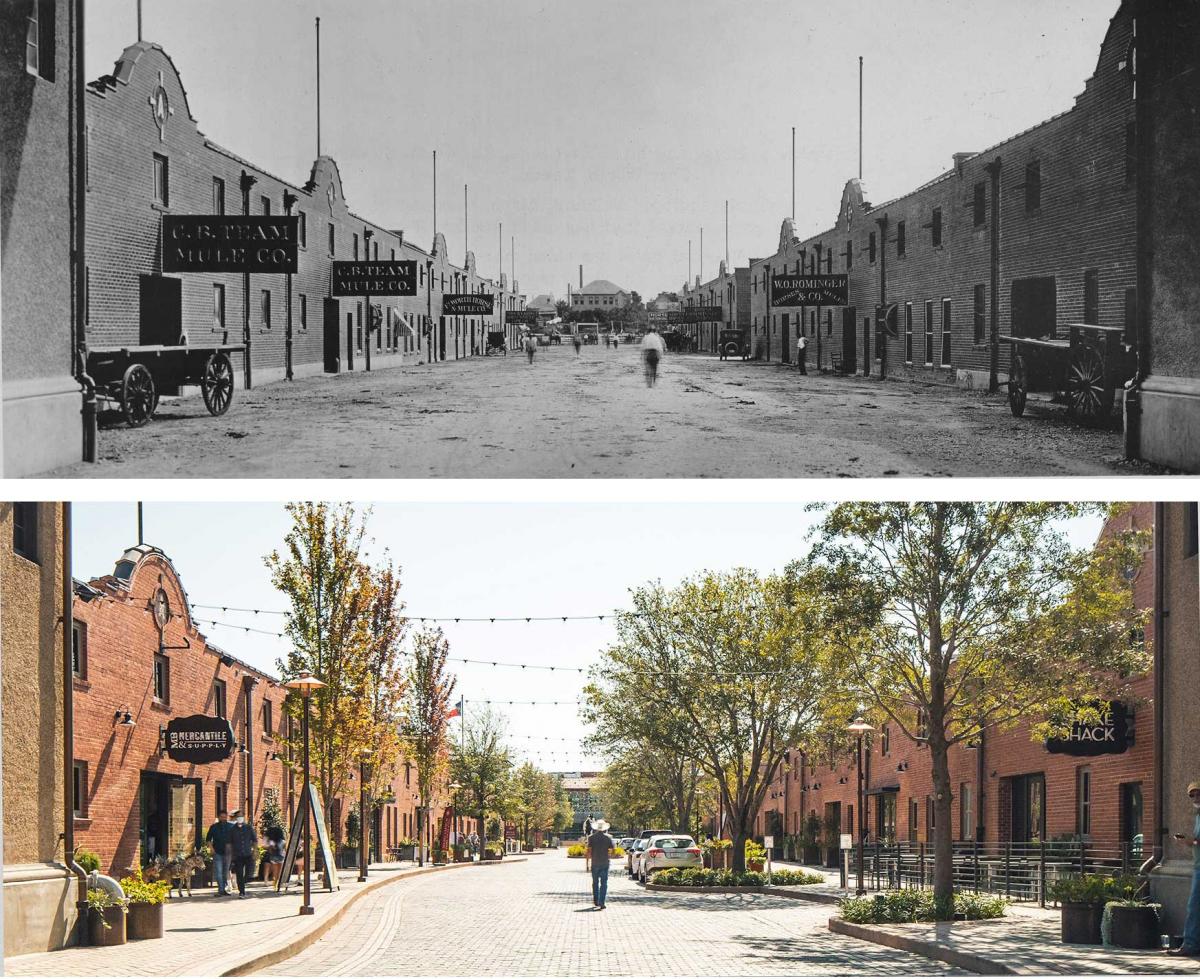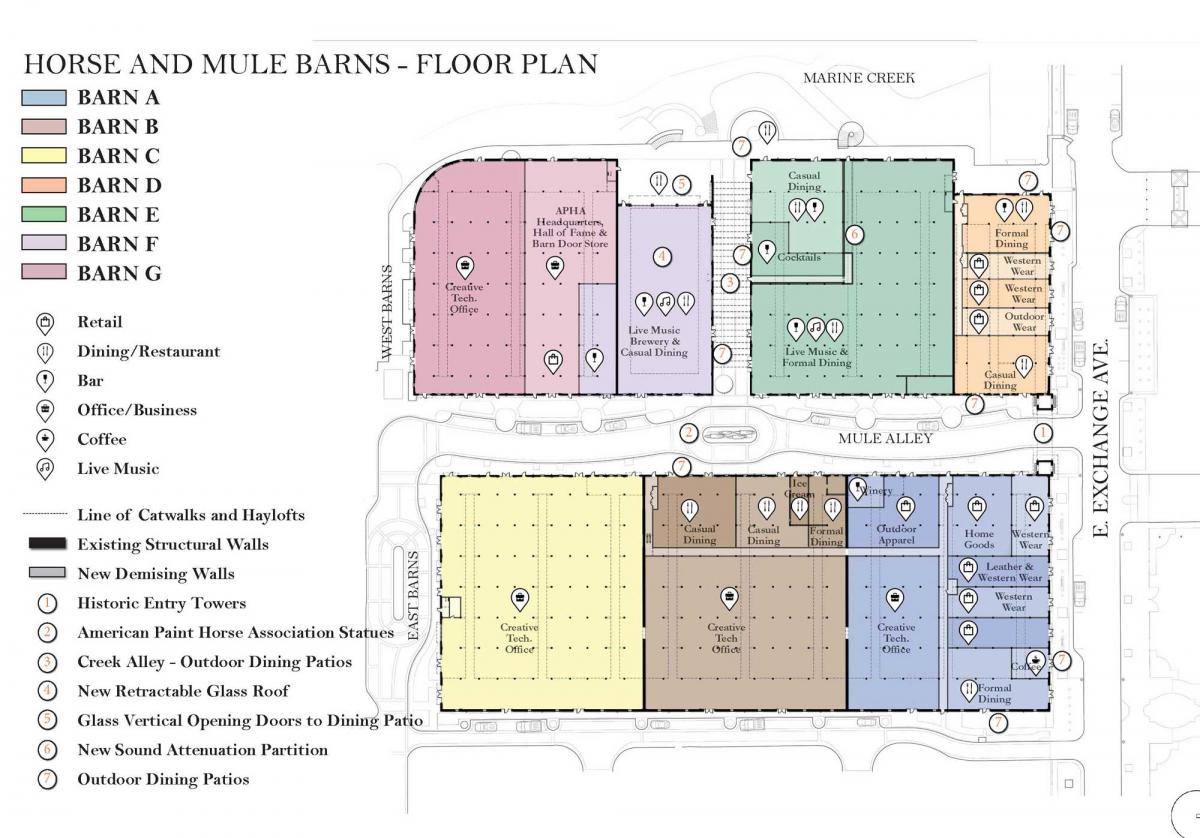
Stockyards reimagined
The horse and mule barns at the Fort Worth Stockyards could house 3,000 equines at one point, but the automotive age made the facility obsolete. The five-acre site was vacant and dilapidated when the city approved a form-based code and design guidelines in 2017 to promote redevelopment of the stockyard.
At the pandemic's peak, the stables were redeveloped as a 180,000-square-foot mixed-use commercial project in an infill neighborhood about two miles from downtown. The adapted barns have a variety of uses, including a brewery and live music, formal and casual dining, shops, and tech office space. The alleys have become unique and lively public spaces in the form of pedestrian walkways.
“Particular attention was paid to the streetscapes surrounding the barns, using salvaged brick pavers from the original livestock pens area of the Stockyards,” according to Bennett Partners, the designers.

Adaptive reuse, preservation of materials
The adaptive reuse was one of the first major projects to be completed in response to the new plan and regulations for the stockyards. The original materials were retained and repaired, keeping them out of local landfills. Modern, energy-efficient building materials were installed on the barns to improve energy efficiency, such as retractable clerestory windows that can be opened or shut down depending on outdoor weather conditions, the designers explain.
The improvements to the central public space, Mule Alley, included native plantings along the streetscape. Large street trees were added to provide shade. The trees will also help shade the barns in the summer, reducing costs for cooling. Street plantings reduce pavement and improve rainwater retention.

This new activity provides eyes on the adjacent Marine Creek Park for the first time in decades, which will help prevent litter and debris from being thrown into the creek. “The mixed-use rehabilitation supported by extensive infrastructure upgrades with activated streets offering a range of Western thematic retail products, expanded dining experiences, and enhanced live music venues demonstrates the significant opportunity and contribution that historic places can make to the local economy while safeguarding such places for the enjoyment of present and future generations,” notes Murray G. Miller, Historic Preservation consultant in the Fort Worth Region.





